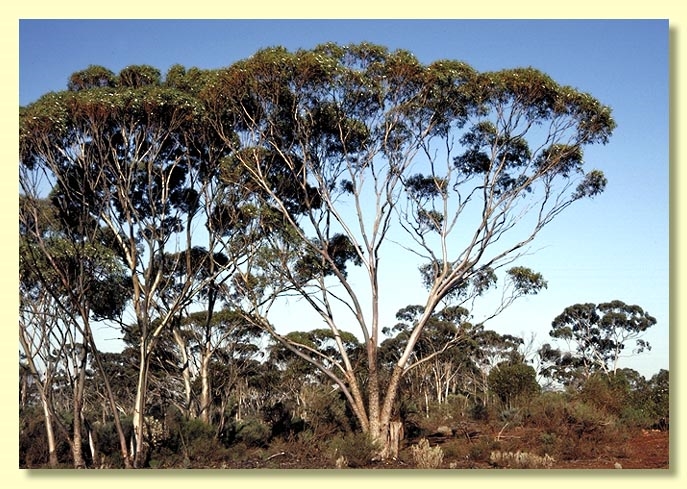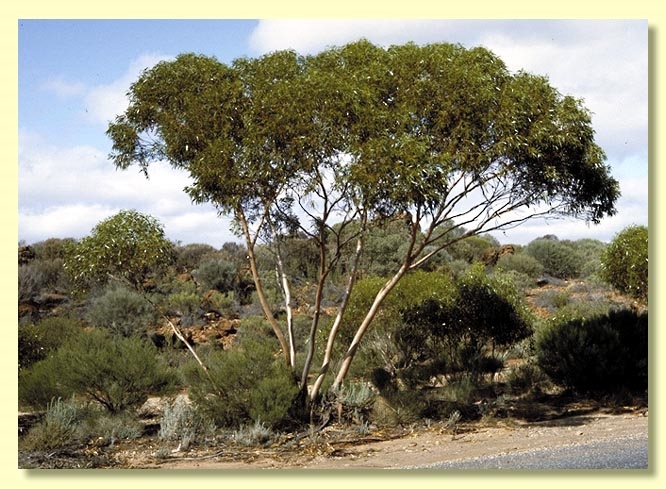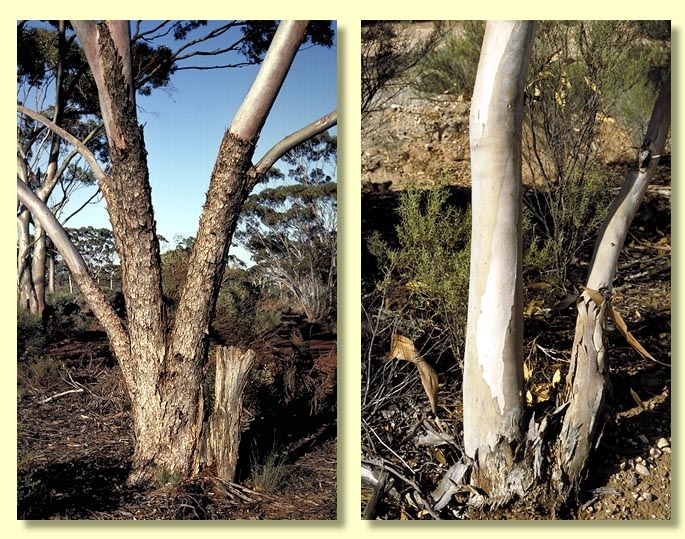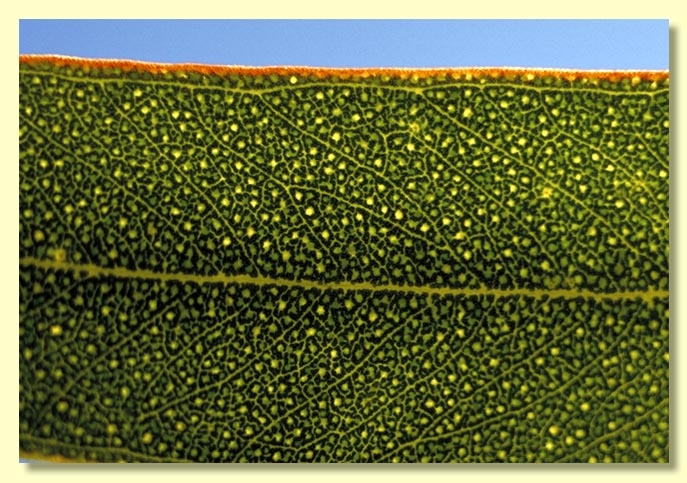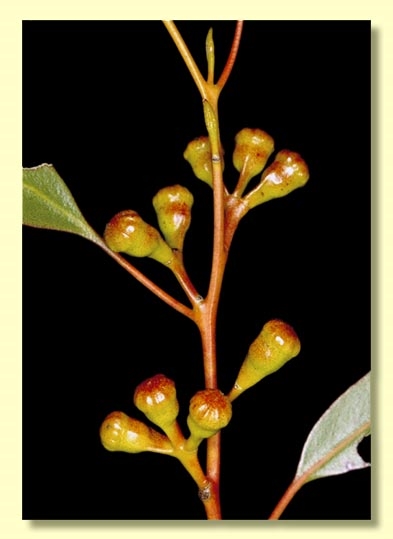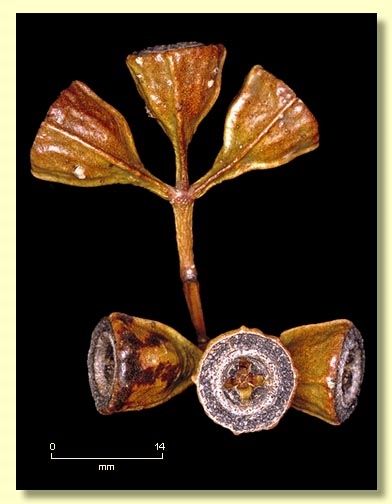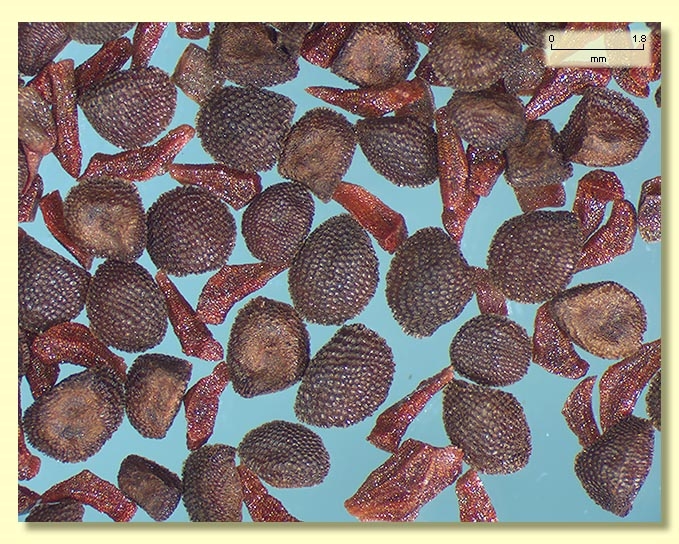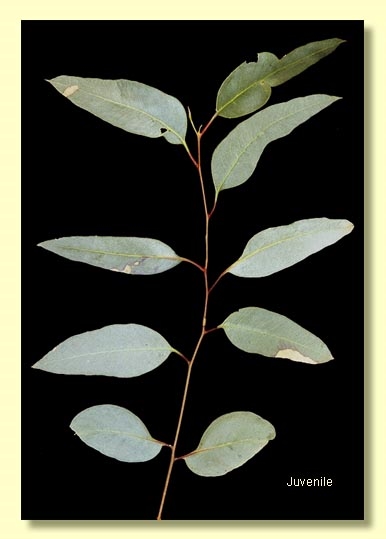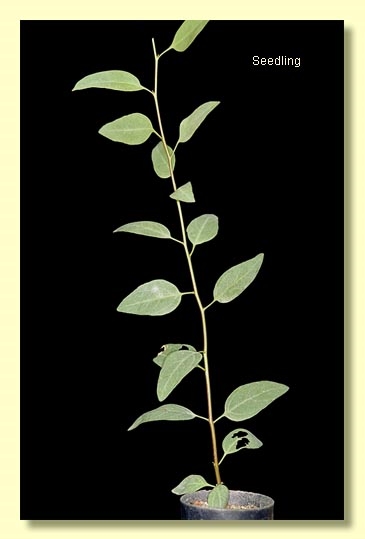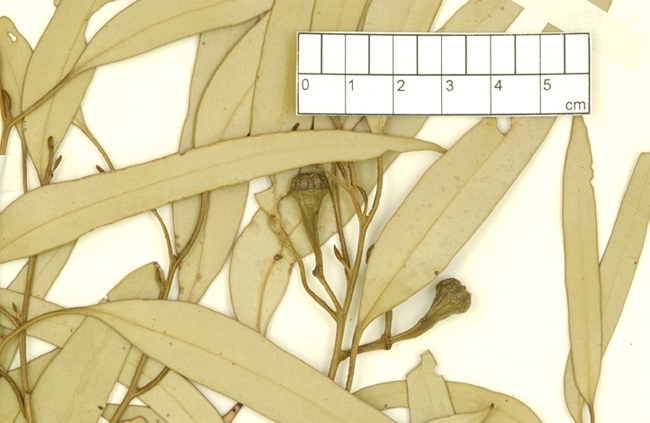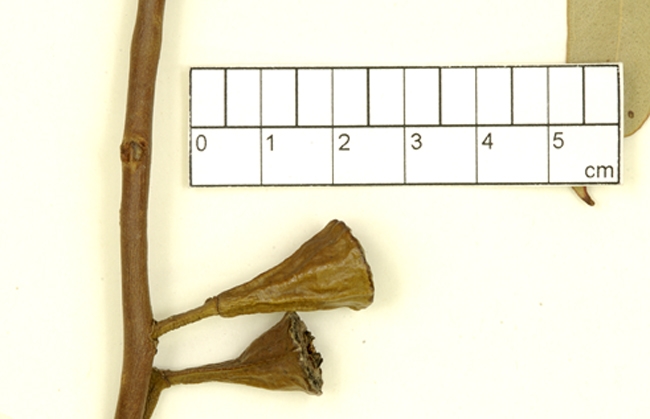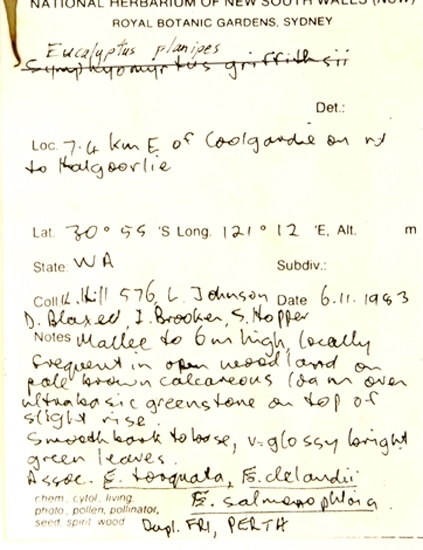Eucalyptus | Symphyomyrtus | Dumaria | Corrugatae
Euclid - Online edition
Eucalyptus griffithsii
Bark rough grey-brown in loose fibrous strips on base of trunk, smooth above, or smooth throughout, grey to whitish over red-brown or grey-brown.
Branchlets may be glaucous; pith glands always present.
Juvenile growth (coppice or field seedlings to 50 cm tall): stems more or less rounded in cross-section, sometimes glaucous; juvenile leaves always petiolate, opposite for few nodes then alternate, ellipical to lanceolate, 4.5–13.5 cm long, 1.6–3.5 cm wide, grey-green to slightly glaucous.
Adult leaves alternate, petioles 1.5–3 cm long; blade usually lanceolate, 8–13.5 cm long, 0.8–2.7 cm wide, base tapering to petiole, margin entire, apex pointed, concolorous, very glossy, green, side-veins at an acute or wider angle to midrib, reticulation dense to very dense, intramarginal vein more or less close to margin, oil glands numerous, intersectional.
Inflorescence axillary unbranched, peduncles 0.5–1.5 cm long, buds 3 per umbel, pedicellate, pedicels 0.3–1 cm long. Mature buds cylindrical to pyriform (0.8–1.5 cm long, 0.7–1.5 cm wide), sometimes glaucous, scar present, operculum flattened and radially striate (0.2–0.5 cm long), wider than the hypanthium, stamens inflexed, anthers wedge-shaped, versatile, dorsifixed, dehiscing by longitudinal slits, style long and straight, stigma rounded, locules 4, the placentae each with 4 vertical rows of ovules. Flowers white.
Fruit pedicellate (pedicels 0.2–0.8 cm long), cupular to obconical with 2 longitudinal ridges continuous with pedicel, 0.8–1.6 cm long, 1–1.5 cm wide, occasionally glaucous, slightly ridged to smooth, disc level to descending, valves 4, near rim level to exserted.
Seeds dark brown, 1.5–3 mm long, flattened-ovoid, dorsal surface pitted, margin irregular, hilum ventral.
Cultivated seedlings (measured at ca node 10): cotyledons reniform; stems rounded in cross-section; leaves always petiolate, opposite for 3 to 6 nodes then alternate, ovate to lanceolate, 5–8.5 cm long, 2–3 cm wide, dull, grey-green.
Flowering has been recorded in August, September and November.
A mallee endemic to Western Australia, occurring in the central goldfields on rocky sites or on stony soils. The bark is rough at the base of the stems only and smooth above, or entirely smooth. Adult leaves are very glossy, green, with numerous conspicuous intersectional oil glands.
Eucalyptus griffithsii belongs in Eucalyptus subgenus Symphyomyrtus section Dumaria because the buds have two opercula, stamens are strongly inflexed, ovules are in four rows on the placentae and cotyledons are reniform. Within this larger grouping E. griffithsii and six other species— E. melanoxylon, E. concinna, E. corrugata, E. brachycalyx, E. rugosa and E. laevis —form a sub-group called series Corrugatae, all with ovoid, conspicuously pitted seeds and with dark brown oil glands in the pith of the branchlets.
E. griffithsii is distinguished from its near relatives by the combination of slightly striate, flat-topped buds that occur in umbels of three, mallee habit and large buds and fruit. It is closest to E. concinna, a mallee of the Great Victoria Desert west to the goldfields where it overlaps slightly with E. griffithsii and plants of intermediate form occur. It is also close to E. corrugata, which is a small tree with a black butt and very coarsely ribbed buds. A form of E. griffithsii in the south of its distribution is narrow-leaved (var. angustiuscula). Buds of the typical (northern) form of E. griffithsii are glaucous but most other populations have non-glaucous buds.
Recently two new species have been described within what is broadly considered to be E. griffithsii in EUCLID (see K.D. Hill et al., (2001)). E. trachybasis, a rough-butted tree or mallee with glaucous branchlets, found from Widgiemooltha north to Callion, and E. planipes (see image of type specimen held at CANB) , a smooth barked, non-glaucous mallee found from Coolgardie to Norseman. Further assessment of these is needed. Both new species are three-budded with a degree of ribbing on buds and fruit similar to that of E. griffithsii, i.e. nowhere near as coarsely ribbed as E. corrugata.

